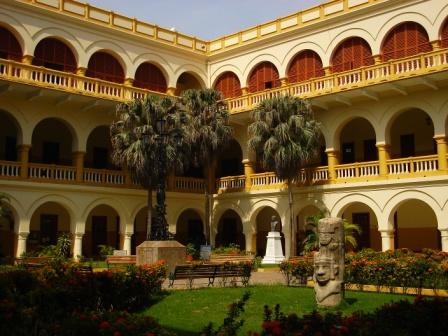Magical realism is a literary motif used to make either mundane, ordinary things become extraordinary or to take something impossible or imaginary and twist it into something almost believable. hubpages.com has a definition of magical realism that I really like.
"Some absolutely love magical realism books, but other readers (and academics, for that matter) hate the genre created by magical realists, and look down their nose at it. Part of the problem is that the very term "magical realism" has a very nebulous meaning and now is often used for marketing purposes for stories (or movies) that are actually surrealist, expressionist, escapist, or experimental in nature. The original definition of magical realism fiction is fiction where the magical or distinctly uncommon occurs frequently, but is seen and treated by the characters as an everyday occurrence. While there are great examples of magical realist literature from other cultures, the earliest common use of this term came with Latin American literature, and early on it wasn't uncommon to see the term "Latin American magical realism."While One Hundred Years of Solitude is often heralded as the best example of this motif, several other works of Latin American fiction are also good examples. Por ejemplo....Chronicle of a Death Foretold by our man García Márquez///La Casa de los Epiritus (or The House of the Spirits) by Isabel Allende/// Metamorphosis by Franz Kafka/// Midnight's Children by Salman Rushdie....and the list goes on.
Columbia University's Department of English and Comparative Literature also has a really good article on the concept and birth of magical realism, and its evolution into post-modern magical realism.
"This heightened reality perception (Ringer's Das Abenteuerliche Herz) leads to the principal characteristics of magic realism, already strongly evident in Kafka, Mann and Musil: derealization (a sudden sense of detachment from the reality of the surrounding object world) and defamiliarization (the representation of familiar objects through a language or descriptive technique that causes them to appear new or shocking). In the derealized and defamiliarized world(s) of magic realism, the unusual juxtaposition of objects throws traditional descriptive systems into disarray, and the boundaries of an assumed "real" are stretched until levels of reality obeying different ontological laws coexist metonymically." (Columbia article excerpt)Having a casual and more academic definition of magical realism gives more of an idea of what to expect from a novel within the genre. I think what I most enjoy about this genre is the escape that it provides. When reading these novels, it allows you to imagine what your own life would be like if the fictitious circumstances were reality. Furthermore, it shows creativity on the part of the author to stretch daily life into something plausible
Outside of literature, the concept of magical realism is also available. We've all seen at least one of the following films in which magical realism is abundant:
Pan's Labyrinth
Like Water for Chocolate (Warning: Nudity..and no subtitles)
Run Lola Run
Moulin Rouge
Pleasantville
The Life Aquatic with Steve Zissou (or any Wes Anderson film for that matter...)
Barton Fink
If you haven't seen or heard of any of these films, just click on them to see movie trailer and that should help out with a mental picture.



